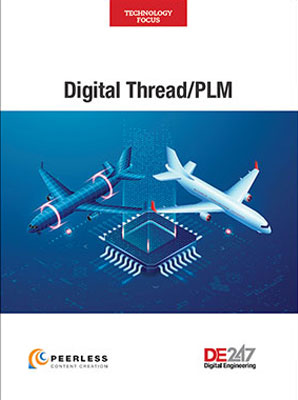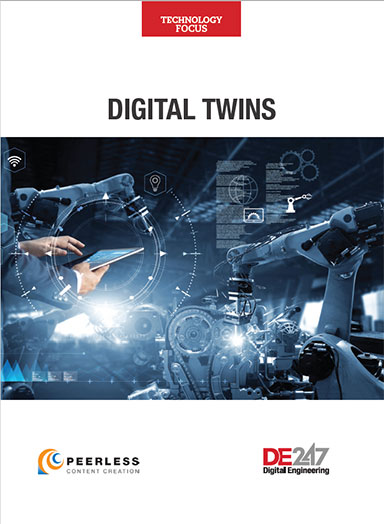Automotive Manufacturing Gone Virtual
AR, VR, digital twins and 3D prototyping all play roles in the future of the automotive market.
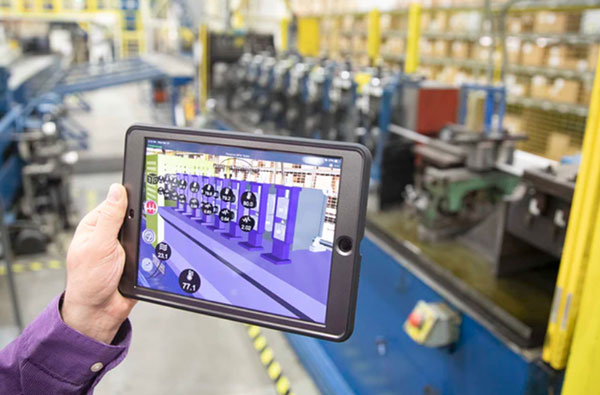
AR/VR technology allows designers and manufacturers the ability to conduct real-time 3D visualization and CAD for design and manufacturing, according to GridRaster. Image courtesy of GridRaster.
Latest News
June 16, 2023
Future automotive factories will have more robust digital technologies than ever, and use augmented reality (AR), virtual reality (VR), digital twins and advanced 3D prototyping. Such technology will be essential to meet demands of the economic landscape in tomorrow’s global automotive market.
The 2023 business climate for automotive manufacturers is a result of continued macro-economic challenges, as well as spinoff issues such as supply chain, labor and inflationary challenges that are forcing many automotive businesses and manufacturing executives to implement AR/VR virtualization, automation and robotics technologies for their production, distribution and fulfillment facilities, according to Dijam Panigrahi, co-founder of GridRaster.
“The ongoing economic challenges, along with continued pressure from business investors for a strong focus on the bottom line, has added pressure to companies that need to become even more efficient with their factory operations and product development teams,” he says.
A Forward March for Virtual Technologies
Mike Bradford is the strategic business development director for DELMIA at Dassault Systèmes. Bradford sees virtual technologies as being key to design for automotive manufacturing in the near and long term.
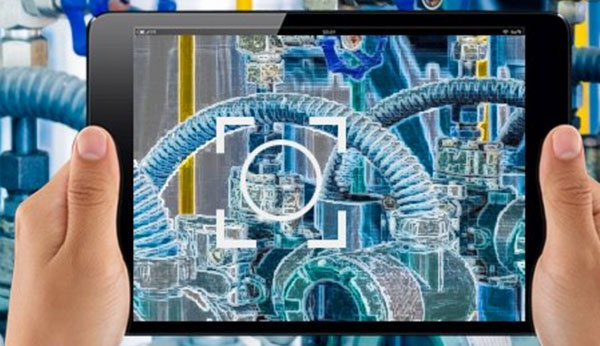
Modeling and simulation enable users to see what they want to accomplish through modeling, simulation and visualization, which can then be implemented and executed in the real world, says Bradford.
“At the same time, experience and data collected in the real world is used to update the virtual twin model and maintain it as a perfect twin that can be used to improve all aspects of real-world operations,” he says. “This convergence of the virtual and real worlds and the continuous cycle of information between the two achieves a closed-loop capability that enables optimization of virtually any scenario.”
According to Bradford, three key areas where a virtual twin is useful include:
1. Facility planning that incorporates model, simulate and optimize physical space and assembly lines to manufacture new products, move or change existing lines and maximize existing space;
2. Process planning, which refers to model, simulate and optimize the production process and associated resources to maximize efficiency of machines and people, minimize cost, ensure effective material flow, identify and correct bottlenecks, maximize quality, and ensure worker comfort and safety; and
3. Manufacturing planning, which involves designs that model, simulate and optimize all levels of planning, from long-range sales and operations planning to near-term production planning to optimize production while managing multiple constraints to address ongoing supply chain issues.
Essential Cohesive Design Approaches
Nand Kochhar is vice president of automotive and transportation industry strategy at Siemens Digital Industries Software. He emphasizes the importance of a cohesive design approach and says it is important to combine the impact of design software, which includes modeling and simulation, with manufacturing.
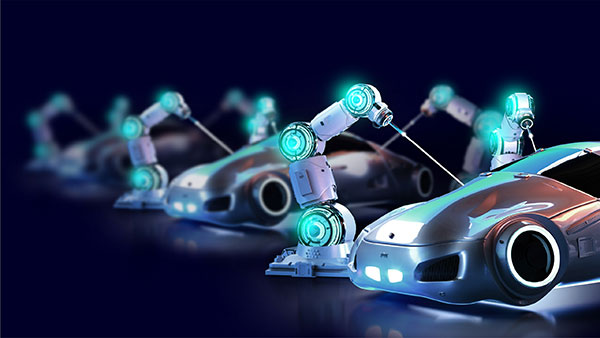
The connected factory of the future will enable advanced planning and scheduling based on if there are supply chain disruptions, according to Siemens. Image courtesy of Siemens Digital Industries Software.
“That’s where the factories of the future can be efficient from a cost, quality and timing perspective. But what’s even more important is getting into the details of each one of the systems or domains,” says Kochhar. “When design teams are doing the design of a given product or system, they produce a bill of design, supported by a bill of materials. When the factories are built or production processes are designed, they have a bill of process.
“When bringing these together, the industry calls it a BoM BoP: bill of material, bill of process,” Kochhar says. “This can guide design teams on setting up the designs in a way that can eliminate waste and prevent reinvention of the manufacturing downstream. You bring in these processes and considerations upfront.”
Kochhar also emphasizes the importance of integrating the requirements of manufacturing into design. “Typically, over the last few decades, things have been done in silos,” he says. “There’s a product development organization, and there’s a manufacturing organization, and things are thrown over the wall and then they have to readjust them. By bringing the manufacturing requirements in, you can be more efficient in the designs, overall design and the delivery of that data. That’s one aspect of linking design software, modeling and simulation software.”
Digital Twins Come into Full Bloom
Digital twins will continue to be a part of automotive manufacturing in the coming years.
Bjorn Sjodin, VP of product management at COMSOL, sees a robust future for the use of digital twins in the future of automotive manufacturing. Such digital twins, he explains, composed of highly compressed and rapidly evaluated physics-based models, enable the integration of modeling and simulation deep into the production process, providing near real-time insights.
“By accounting for the simultaneous effects of multiple physical phenomena, multiphysics modeling can make digital twins even more realistic. In the manufacturing setting, multiphysics-enabled digital twins can capture the effects that govern the behavior of materials and processes,” Sjodin says. “By incorporating reduced-order modeling and machine learning techniques, these advanced digital twins are well-equipped to address the challenges associated with time-consuming full-scale simulations, making them particularly well-suited for production environments.”
Digital twins can be quite beneficial in procurement and supply models to support the automotive supply chain. Vehicle production is a massive undertaking, requiring thousands of parts and workers moving in parallel, says Danny Shapiro, vice president of automotive at NVIDIA.
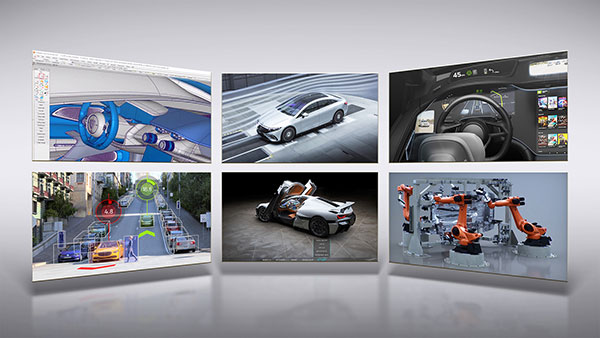
“Any supply chain or manufacturing issues can lead to costly delays,” says Shapiro. “With NVIDIA [artificial intelligence] and Omniverse, automakers can develop and operate complex, AI-enabled virtual environments for factory and warehouse design. These physically based, precision-timed digital twins are key to understanding operational efficiencies with predictive analysis and process automation—while also helping to reduce waste, decrease energy consumption and continuously enhance quality.”
Shapiro explains when automakers roll out a new model, they must reconfigure the layout of production plants to account for the new vehicle design.
“This process can take significant portions of the factory offline, pausing manufacturing of existing vehicles, which ultimately affects profitability,” Shapiro says. “Factory planners can access the digital twin of the factory to review and improve the plant as needed. Every change can be quickly evaluated and validated in the virtual world, then implemented in the real world to ensure maximum efficiency and optimal ergonomics for automotive factory workers.”
“The key benefit of using digital twins is the ability to save time and money by identifying and addressing potential issues before they occur,” says Conrad Teow, director of automotive manufacturing, test solution business at Keysight Technologies. “One of the prominent use cases of a digital twin is to simulate production processes and operations with real-world objects such as walkways, buildings, factory floors, conveyor belts, robots [and] test equipment to virtually optimize the layout and process improvement of a production line, robotics and logistic systems. This will make it possible to operate the entire highly complex vehicle production virtually and many [original equipment manufacturers (OEMs)] are seeing this transformation as the vision of the future.”
Digital twin usage should become more widespread in automotive manufacturing as their use may benefit many areas of the auto manufacturing model.
“The need to combine all aspects of the plant and supply chain into a single digital twin—not just the electromechanical components—really cannot be overemphasized. Modeling the buildings, land, services and asset management, then applying the power of generative design to that integrated model, will be critical in lowering energy consumption and raw material costs, as well as improving operational efficiency, capital plant equipment utilization, safety and commissioning time,” says Stephen Hooper, vice president of design and manufacturing product development, Autodesk.
He says many challenges that smarter factories and rich digital twins help solve are common to all manufacturers, not just automotive manufacturers.
“Focusing on auto specifically, technology helps address the supply chain disruptions and geopolitical issues we’ve all become aware of impacting auto over the last few years, as well as the breakneck pace at which the auto industry is changing as it transitions from internal combustion to electric vehicle,” he says. “The move toward EV [electric vehicles] is causing huge turnover in production lines, forcing existing OEMs to either build new sites or introduce whole new lines to existing plants. Manufacturers need a more efficient path to creating and commissioning these new lines. Data-driven models and cloud-powered simulation are that path.”
Mike Thoeny, president, automotive, at Flex in Detroit, MI, sees simulation and digital twins as means to allow manufacturers to be more agile and resilient even with disruptions.
“In an increasingly chaotic world, digital twins and other Industry 4.0 technologies allow manufacturers to quickly understand the true risk and impact of disruptions,” he says. “We can simulate line flow to understand the potential effect of shortages and other challenges to deliver as planned, providing alternatives and optimizations to limit the impact. This helps accelerate the change process and validates changes before implementation, saving cost and time.”
One of the biggest benefits of simulation in the automotive industry is during the production part approval process, a strict documented process that ensures products delivered to customers meet their requirements for performance, quality and delivery, Thoeny says.
“We use simulation to speed this process, building out production flows in software, iteratively, to ensure we have the required capacity and capabilities before we build it in real life,” says Thoeny. “This can save months of time and resources, ensuring that automotive OEMs can innovate to accelerate next-generation mobility while maintaining quality, safety and resiliency. We are also able to streamline serial production by gathering early input into the process failure mode and effects analysis. By simulating production lines and processes, we can quickly identify areas of highest risk and key bottlenecks and then develop and implement risk mitigation strategies in advance.”
Simulation and modeling as well as digital twins play a role in another dominant objective in modern automotive manufacturing: reducing waste and creating lean processes.
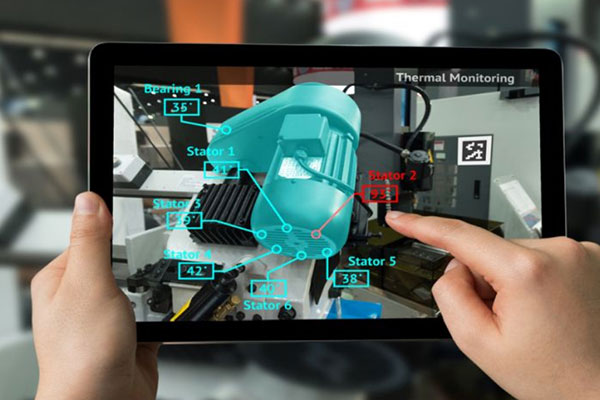
Regarding automation technologies, it’s important to observe the technology infrastructure and to choose a platform that is cloud-enabled, a GridRaster expert notes. Image courtesy of GridRaster.
“One of the major challenges in automotive manufacturing is reducing waste and increasing efficiency in production output,” says Doug Kenik, director, product management of software for Markforged. “Engineering tools such as digital twins, simulation and 3D prototyping can help address these challenges. Digital twins can provide real-time feedback on the performance of production equipment, allowing for proactive maintenance and reducing the risk of downtime. Simulation can be used to optimize manufacturing processes, reducing waste and increasing efficiency. 3D prototyping can enable rapid iteration and testing of new designs, reducing the time and cost associated with physical prototyping.”
A Digitized Automotive Future
Future design approaches in automotive manufacturing development must focus on ways to foster flexibility, while capitalizing on digitization throughout the modern automotive enterprise.
The challenges for automotive manufacturers are delivering the next generation of smart, electric, connected road vehicles that are sustainably designed, manufactured and powered, says Ignazio Dentici, vice president and global eMobility practice lead at Hexagon’s Manufacturing Intelligence division.
“OEMs will have to adapt and manage new production processes to create new parts that are integral to the manufacture of electric vehicles—from batteries to powertrains. To meet this end, flexibility and digitization are the two key words that will define the transformation of car production, as manufacturers embrace new ways of designing and manufacturing vehicles,” says Dentici. “To enhance their products and processes, automotive manufacturers must embrace the use of design software in conjunction with modeling and simulation software to overcome the challenges of complex designs and shorter development cycles.”
More Autodesk Coverage
More COMSOL Coverage
More Dassault Systemes Coverage

More Flex Coverage
Subscribe to our FREE magazine, FREE email newsletters or both!
Latest News
About the Author
Jim Romeo is a freelance writer based in Chesapeake, VA. Send e-mail about this article to DE-Editors@digitaleng.news.
Follow DE




